I just found out something absolutely gob smacking. Twitter was boiling with disbelief (mainly from Aussies); the electric kettle is almost unknown in the US. My first reaction was: What? (With a few exclamation marks added). How can that be? How does one boil water for a cup of tea?



Further investigation and FB reply posts tell me there are a plethora of electronic devices for making coffee but not for boiling water for tea. It’s either provided by:
- instant hot water taps.
- microwave or
- on the stove kettle.
The mind boggles. I average 4 cups of tea a day and, while we do have a stove top kettle for power failure days (more than we like recently), it is more convenient to just pop the electric kettle on and keep writing until it boils. (It’s also safer. Yes, I have forgotten about the stove top kettle and almost boiled it dry. Oops.) I’ve tried microwaving the water (when the kettle died). The tea tastes flat.
This prompted me to pull out my research on making tea (yes, I did that for a previous story idea. I wanted to know how, and if, tea making in the 19th century, WWI and WWII.) I came across this: Tea According to George Orwell.
There are many webpages – historical or from tea merchants – who can advise on making the ‘proper cup of tea’. There are hot debates on:
1. Pot versus cup
I do both, depending on how many people are drinking the tea and how much time I have. Using a pot takes longer. If I forget and leave the pot too long, the tea goes bitter. So, if I’m home alone, I’ll use a cup.
2. Leaf versus teabag
This is what George Orwell has to say on the matter:
“The tea should be put straight into the pot. No strainers, muslin bags or other devices to imprison the tea. In some countries teapots are fitted with little dangling baskets under the spout to catch the stray leaves, which are supposed to be harmful. Actually one can swallow tea-leaves in considerable quantities without ill effect, and if the tea is not loose in the pot it never infuses properly.”
 I do own tea bags, mostly for boutique teas or my friends’ favourites. I prefer loose leaf tea. I have a selection of various teas (mostly from T2, The T Bar and Kappy’s Cafe).
I do own tea bags, mostly for boutique teas or my friends’ favourites. I prefer loose leaf tea. I have a selection of various teas (mostly from T2, The T Bar and Kappy’s Cafe).
Originally we changed to loose leaf tea for environmental reasons – to reduce household waste. The bags add to unnecessary paper wastage and pile up in the bin. I also put spent tea leaves over my roses. They love it.
Loose leaf is best kept in air tight containers. Fresh tea does taste better. Fresh, loose tea tastes best.
And you can get such cute tea accessories. Here are just a few of my ‘tea balls’:
3. Mug versus teacup
I use both. I prefer tea cups, the prettier or more interesting the better. I have a collection of receptacles for my tea. A tea cup can dictate my mood and therefore my writing. The one thing that experts seem to agree on is to avoid disposable cups. (It really does change the taste.)
4. Add milk first (Miffins) or add milk last (Tiffins).
I don’t add milk, so I can sit on the fence with this one. Being lactose intolerant, it was easier to wean myself off milk than to ask for soy (which I don’t like the taste of) or take my own goat milk when I went out. It’s not a regular thing people have in their fridge. So I prefer my tea black with none (ie. no sugar). It makes life so much easier.
But to answer the question. It’s really up to you. According to Mr Orwell, milk is added last. Adding the milk first will drop the temperature of the tea and effect the taste of the tea, and makes it easier to judge how much milk to add until your tea is just right (we all know the colour of our preferred tea). The University College London recommend milk first. (Apparently it was orignally done, in 18th century England, to cool the water so the cups of the time would not shatter, as most people couldn’t afford fine china cups).
And now for the science of a perfect cup of tea
According to a study by the University College London, the type of cup, water temperature and brewing time are all crucial to that perfect cup of tea.
- The smooth surface of a china cup or mug keep the natural tannins in the tea from sticking to the cup and provides a psychologically comforting sound when stirring your tea.
- Fresh water in the kettle gives improved flavour. Reboiling existing water in the kettle reduces the oxygen content of the water, hence less drawing less flavour from the leaves.
- Temperature: For black tea, let the kettle boil and then click off. Wait a few seconds and pour. Hotter water increases the rate of chemical reactions. The ideal temperature is 93 deg C (200 deg F). For green or white tea, leave to cool a while longer. Delicate teas are best brewed at 80 degrees Celcius (so the leaves aren’t damaged). There are now temperature regulated electric kettles available. You can set the temperature for standard black tea, green tea or boutique teas.
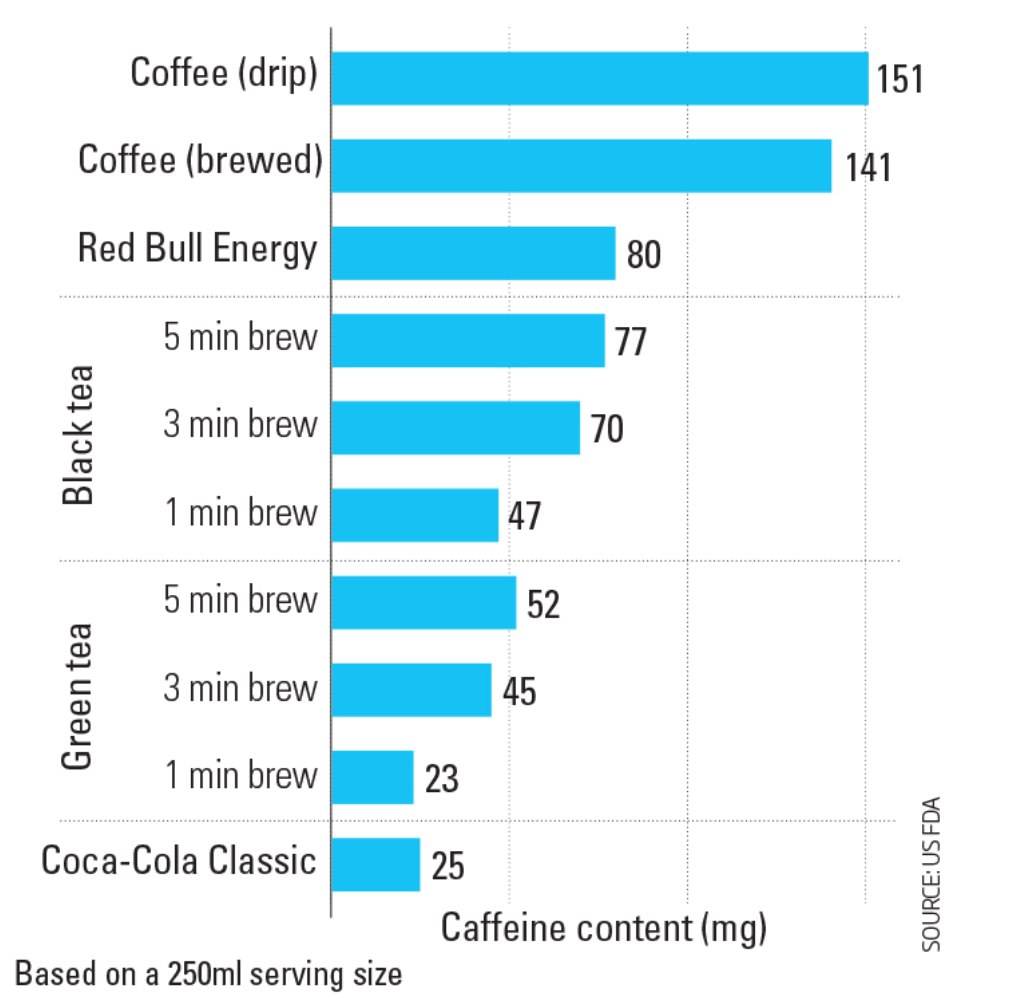 Ideal brewing time is 2-5 minutes. This will depend on the type of tea. Brewing time is less for in the cup versus in the pot. New Scientist magazine offered this information on caffeine levels and brewing time based on FDA information. If you’re not sure, just ask at your local tea shop (at least in Australia) when you buy your favourite tea. They will tell you the ideal water temperature and brewing time.
Ideal brewing time is 2-5 minutes. This will depend on the type of tea. Brewing time is less for in the cup versus in the pot. New Scientist magazine offered this information on caffeine levels and brewing time based on FDA information. If you’re not sure, just ask at your local tea shop (at least in Australia) when you buy your favourite tea. They will tell you the ideal water temperature and brewing time.
It’s all about ‘patience, love and care‘. Even the scientists understand the psychological benefit of that hot, relaxing cuppa. Ah, tea!
Finally, here’s I make my tea in a cup
- Fill the kettle with fresh (filtered – hey, I live in Adelaide!) water
- Boil. Let rest for a few seconds.
- Fill teaball with a teaspoon of tea (My favourites are Prince of Wales – without the fancy fruit leaf additions – and Roman’s blend (a special blend of of Darjeeling and Assam made by Kappy’s for a friend of ours. Yep, his name is Roman.)
- Pour water
- I brew for only a minute. I drink a lot of tea. The caffeine helps reduce my migaines. I’ve found several cups over the day is better for keeping them at bay, than one mega hit, which also kicks off a sleepless night and possible anxiety.
And for the pot:
- Fill the kettle with fresh water.
- Boil and pour into pot, to warm it.
- Fill the kettle again.
- Boil. Let rest for a few seconds.
- Pour out water from pot. (When it cools it gets poured on thirsty pot plants)
- Put tea leaves in pot (one teaspoon per person and one for the pot)
- Pour water
- I brew slightly longer for the pot, usually about two minutes for my cuppa. I let it brew a minute or so longer for my fellow drinkers.
And an added bonus – Tim Tam Slam
No digestive bikkies for us. Try a Tim Tam Slam.
- Make a nice cup of tea.
- Choose your Tim Tam wisely
- bite two corners off (on opposite sides)
- dunk your Tim Tam into the tea (or coffee for purists) – while it is still piping hot.
- Suck through the Tim Tam, using it like a straw.
- And enjoy the chocolatey-tea goodness but be warned. It can get messy.
So do you use a stove top kettle, electric kettle or microwave? I’d be interested to know how you boil your water for tea. Please leave a comment below.
Photos ©2017 Karen J Carlisle

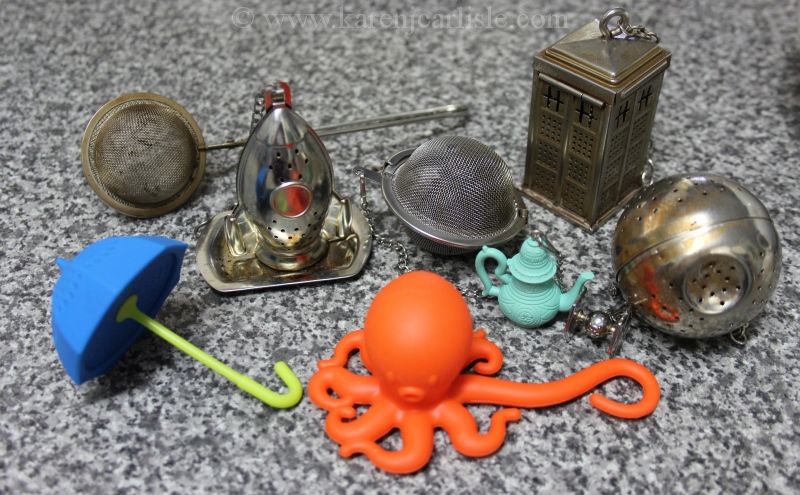
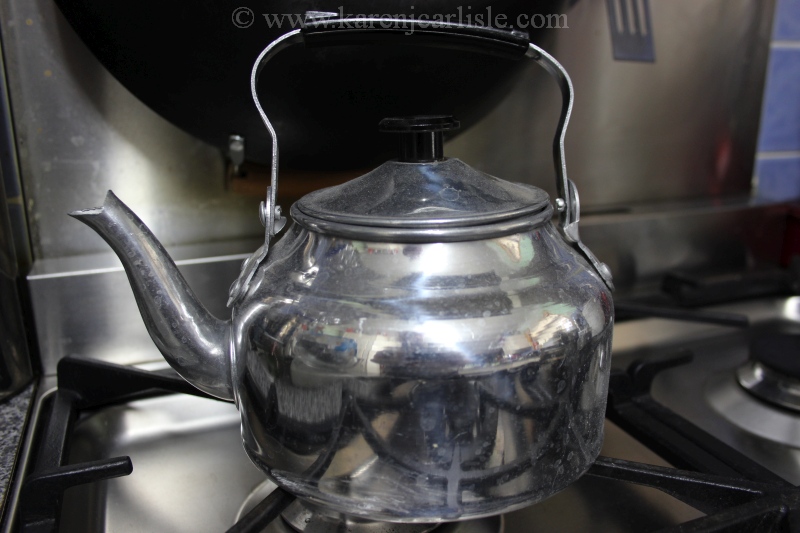
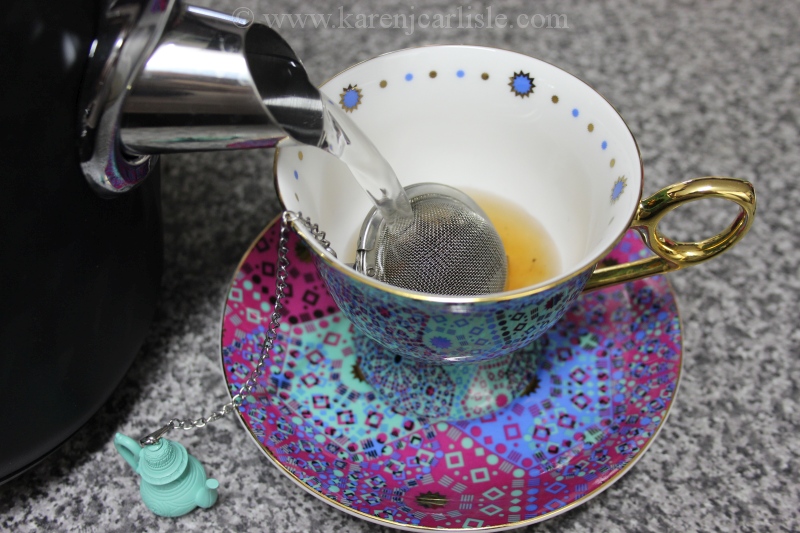
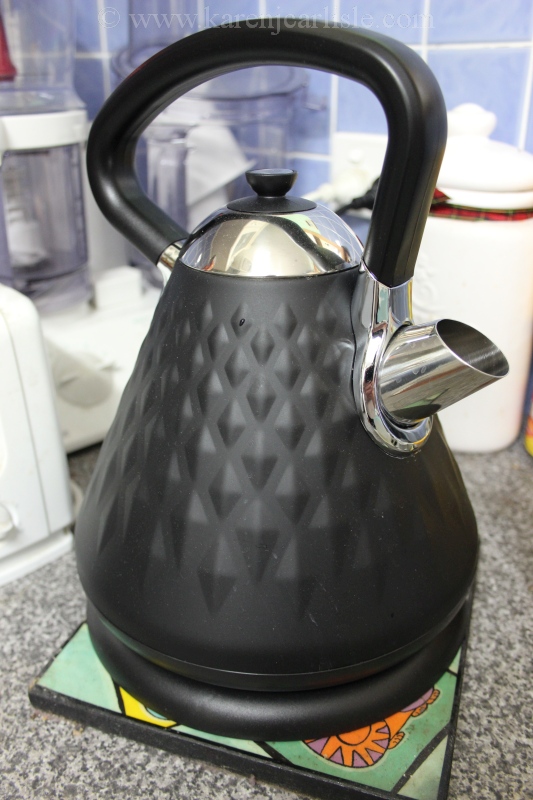
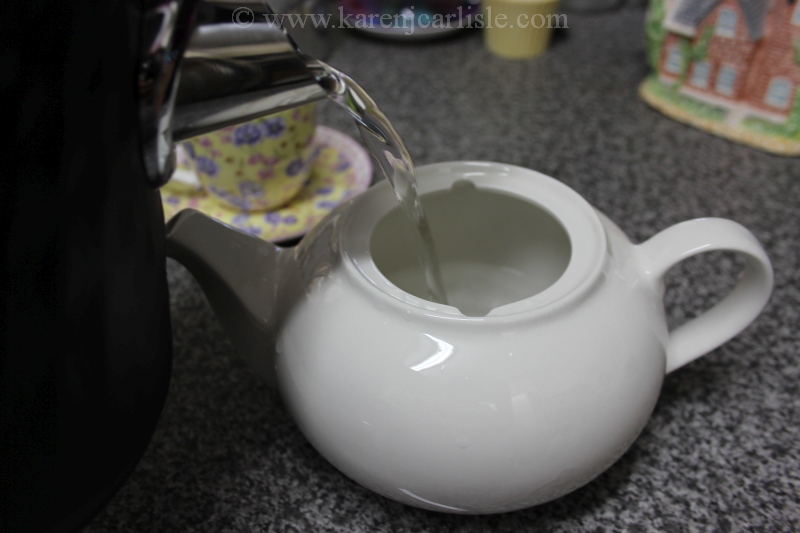
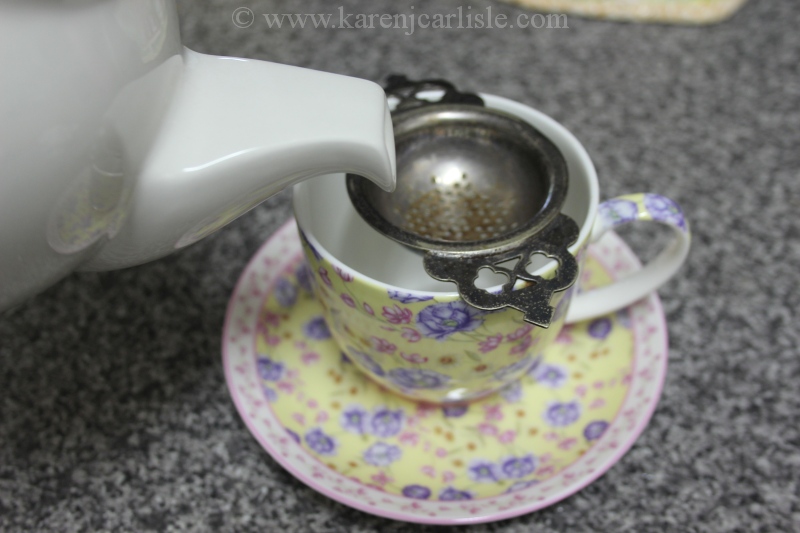
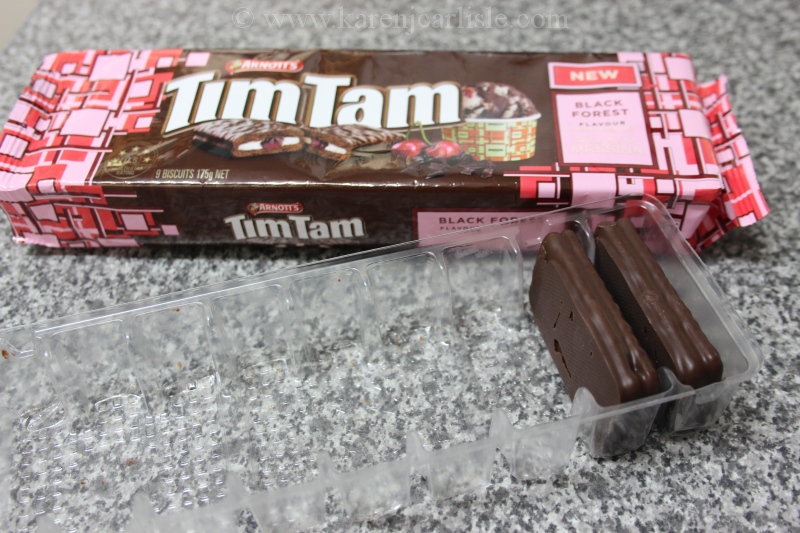
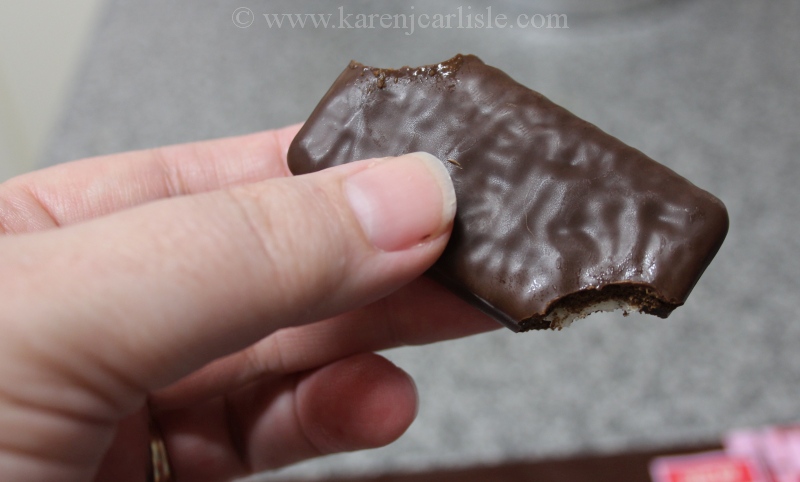

We have an electric kettle at the 4-meter telescope at Kitt Peak National Observatory in the U.S. and electric kettles are readily available in stores in the Southwestern United States. I haven’t looked in other parts of the country. Despite that, we actually do tend to use a stovetop kettle for brewing tea at home.
It seems it varies a lot depending on where people live in the US… or if they indeed even drink tea.